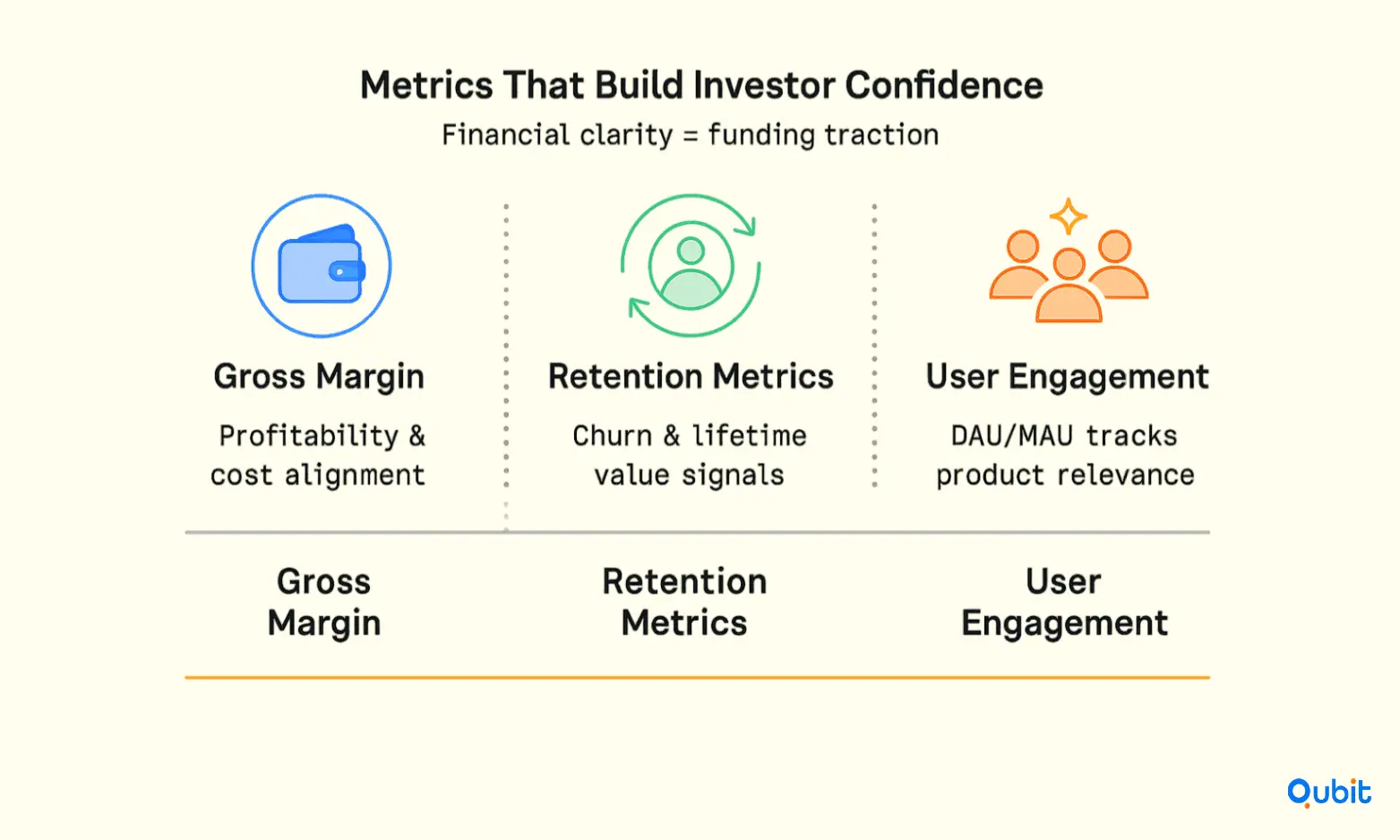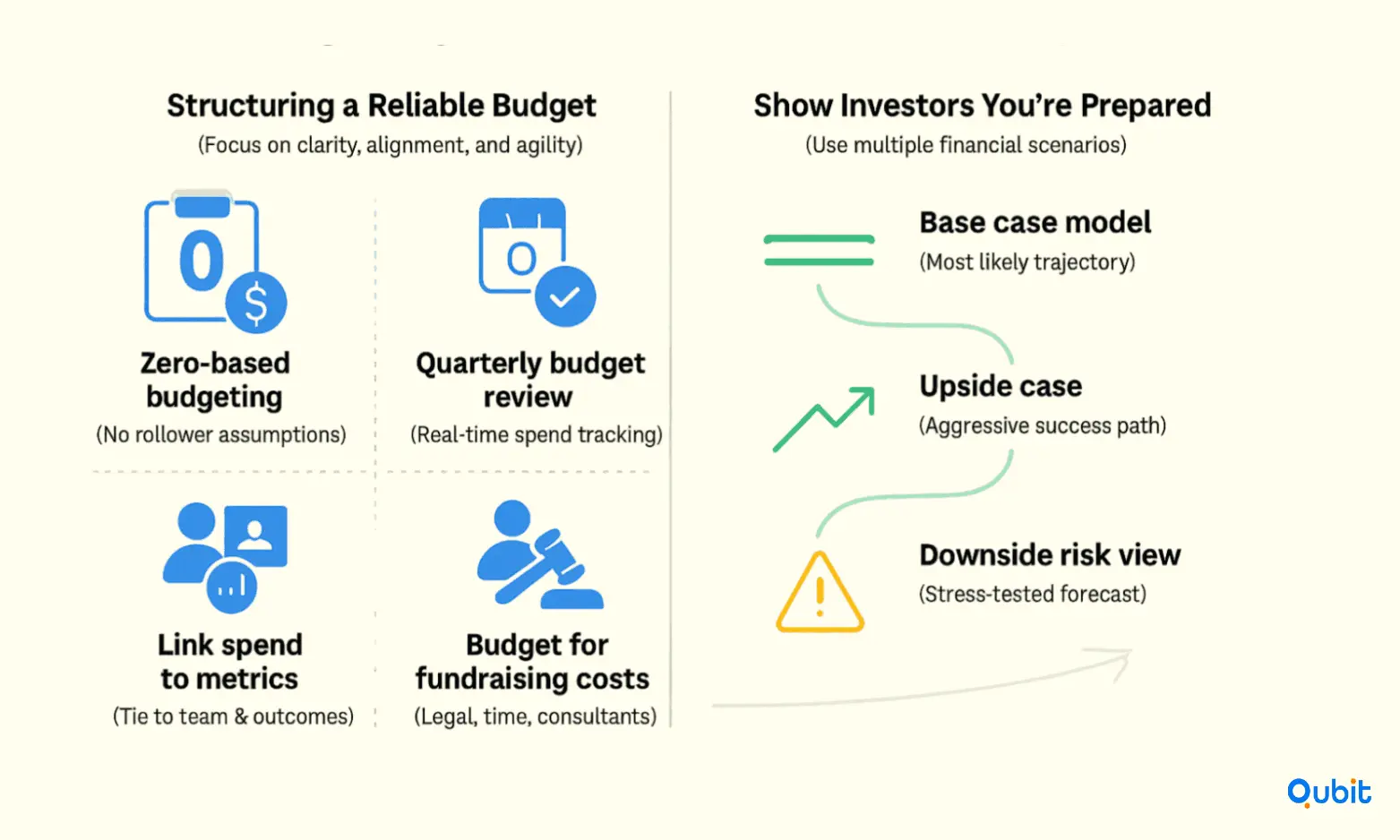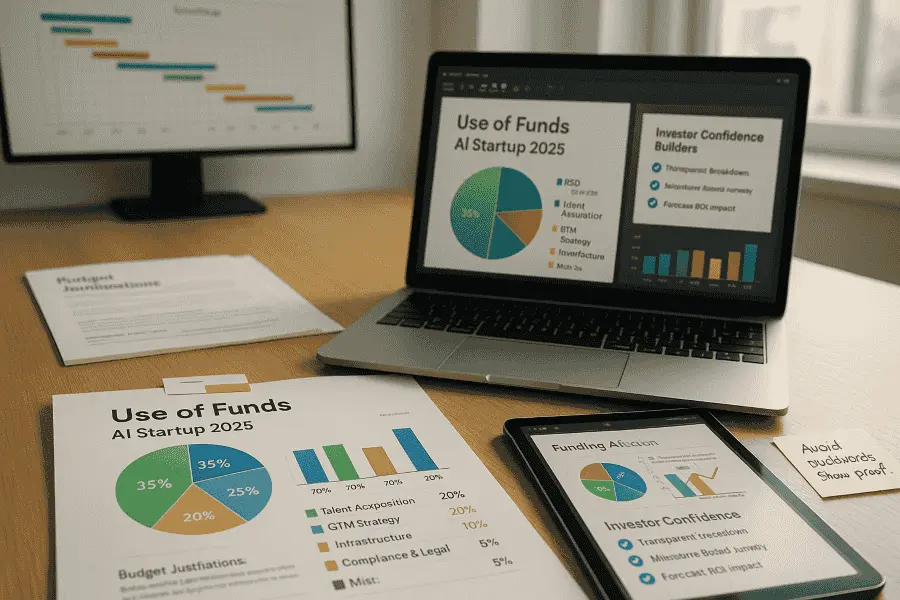Launching an AI startup is an exciting venture, but it comes with unique financial challenges. Transparent budgeting is not just about managing expenses; it’s a critical tool for building trust with investors and stakeholders. By clearly outlining how funds will be allocated, startups can demonstrate their commitment to sustainable growth and operational efficiency. This approach aligns seamlessly with broader fundraising strategies, as explored in how to raise money for AI startup, which examines overarching methods that underpin effective financial planning.
In this article, we’ll delve into how strategic budgeting can enhance investor confidence, explore key metrics for financial transparency, and provide actionable insights to help your AI startup thrive. Let’s jump right in!
Why Budget Structure Matters for AI Startups
AI startups face unique financial pressures: steep R&D costs, cloud infrastructure expenses that can balloon unpredictably, the imperative to secure elite talent, and the ongoing costs of data acquisition and compliance. Investors are now demanding visibility into how startup leaders plan to balance these needs, measure spend against tangible metrics, and adjust as results (or market conditions) dictate.
A robust use-of-funds plan should do more than outline percentages. It should connect each major spending category to near-term milestones, unit economics, and longer-term value creation, showing how every rupee, dollar, or euro fuels company progress.
Mastering Metrics in AI Startups
Establishing a solid financial foundation for an AI startup begins with understanding the metrics that matter most. Investors prioritize measurable outcomes that demonstrate profitability, scalability, and operational transparency. This section explores three critical performance indicators, gross margin, retention metrics, and user engagement, that not only highlight growth potential but also foster investor confidence through verifiable data.

Gross Margin: A Snapshot of Profitability
Gross margin serves as a key indicator of financial health, revealing how efficiently your startup generates profit relative to costs. For AI startups, maintaining a strong gross margin is essential to demonstrate the viability of your business model. Investors often scrutinize this metric to assess whether your operational costs align with revenue growth. Transparent reporting of gross margin figures can significantly enhance credibility, showcasing your ability to scale sustainably.
Retention Metrics: The Backbone of Scalability
Retention rates provide a clear picture of customer loyalty and satisfaction, which are vital for long-term growth. Metrics such as churn rate and customer lifetime value (CLV) offer insights into how well your AI solution meets user needs. High retention rates signal operational stability and scalability, making your startup more attractive to investors. Over 70% of global AI venture capital activity emphasizes the importance of consistent performance tracking, underscoring the need for reliable retention data.
User Engagement: The Pulse of Market Demand
Daily Active Users (DAU) and Monthly Active Users (MAU) ratios are powerful indicators of user engagement. These metrics reveal how frequently customers interact with your product, providing a direct measure of its relevance and value. Strong DAU/MAU ratios not only validate market demand but also highlight defensibility against competitors. Transparent engagement data can help investors gauge the growth trajectory of your startup, reinforcing their confidence in your operational strategy.
An analysis presented in quantifying AI startup ROI for investors deepens the discussion on financial strategies by illustrating ways measurable outcomes can align with your budgeting framework.
By focusing on these metrics, AI startups can build a compelling case for scalability and profitability, ensuring they stand out in a competitive funding landscape.
Core Principles for AI Startup Budgeting
1. Anchor Spending to Milestones, Not Time
Rather than spreading costs evenly, align every major budget category to clear development or commercial milestones (e.g., “Phase 1: MVP launch,” “Phase 2: 10 enterprise pilots,” “Phase 3: scalable cloud migration”). This strategy helps you unlock incremental capital only when progress is validated, avoids overcommitting resources before market fit, and paces fundraising to execution
2. Understand and Distinguish Between Fixed vs. Variable Costs
- Fixed costs (founder salaries, office rent, essential software) stay level regardless of volume.
- Variable costs (cloud compute, API usage, commission payouts) scale with growth or adoption.
Carefully forecasting how variable expenses will rise with user numbers or model complexity is especially crucial for AI startups, where cloud costs can quickly outpace early revenue if not closely tracked.
3. Prioritize High-Impact Budget Areas
Focus allocations on what matters most in your company’s stage:
- Early stages: R&D, model development, MVP, data gathering, initial pilots.
- Post-validation/scaling: Cloud infrastructure, customer acquisition, GTM (go-to-market) hires, customer success, security and compliance investments.
- Talent: Top-tier AI/ML engineering is almost always your largest single line item; consider strategic outsourcing, equity-based compensation, and leveraging global talent pools when possible.
4. Build in Flexibility for the AI Unknowns
AI projects can run into unforeseen technical or regulatory hurdles. Allocate contingency (often 10–15%) for unexpected cloud costs, compliance changes, or “fail fast” POCs. Regularly revisit the budget as milestones are reached or delayed.
5. Communicate Use of Funds Clearly to Investors
Investors want to see direct ties between spend, company value, and risk reduction. Show:
- What percent goes to each major area (e.g., “40% to product/R&D, 25% to GTM, 20% to cloud, 10% to data, 5% to compliance/other”).
- For each, what milestone or metric it directly enables (“This $150k funds annotation/Python data pipelines for Model v2”).
- The contingency and learning loops in place—“what happens if a line overruns, and how do you adjust?”
Use simple tables or visuals in your pitch and board updates
Expense Categories Typical for AI Startups
| Expense Category | Typical % Allocation | What It Drives | Investor Lens |
|---|---|---|---|
| Product Dev/R&D | 30–50% | MVP, core models, POCs, feature upgrades | Proof of technical edge |
| Cloud/Infra | 15–30% | Compute for training, inference scaling | Model efficiency, gross margin |
| Talent (salaries) | 20–40% | Founders, engineering, AI/ML team | Retention, IP concentration |
| Data Acquisition | 5–15% | Licensing sets, annotation, cleaning | Unique moat, regulatory risk |
| GTM, Marketing, Sales | 10–25% | Customer trials, outbound, event presence | Customer pipeline, CAC/LTV |
| Compliance & Security | 3–10% | Data privacy, audit, certifications | B2B/regulated sector access |
| Ops, Admin, Legal | 5–10% | Finance, HR, legal setup, fundraising costs | Runway extension |
| Contingency | 5–15% | Unforeseen tech, cloud, or regulatory overruns | Planning prudence |
Understanding AI Valuation Trends
The valuation landscape for growth-stage AI startups is shaped by a mix of investor optimism, technological innovation, and market dynamics. These startups often command impressive revenue multiples, ranging from 8x to 20x, reflecting their potential for durable growth and scalability. Such premium valuations are not arbitrary, they stem from a combination of proprietary technology, domain expertise, and robust data defenses that investors find compelling.
One emerging trend is the rise of verticalized AI solutions, where startups focus on sector-specific applications like healthcare, finance, or education. This targeted approach not only enhances operational efficiency but also attracts higher valuations due to its ability to address unique industry challenges. For example, focusing on a narrow industry vertical can drive more targeted investor interest, as demonstrated by the success of startups specializing in healthcare AI.
Another factor influencing valuations is the shift to in-house AI development. With 83% of enterprises planning to boost internal AI budgets, startups positioned to serve these companies with specialized tooling stand to benefit. This shift underscores the growing demand for custom AI solutions tailored to specific organizational needs.
Finally, advancements in predictive analytics are reshaping how firms approach forecasting. Companies adopting predictive analytics report a 25–30% improvement in accuracy, which not only boosts operational efficiency but also enhances investor confidence in the startup’s ability to deliver measurable results. Improved forecasting capabilities can significantly multiply a startup’s valuation, as demonstrated by firms that integrate predictive analytics into their core offerings.
Best Practices for Budget Structure

- Use zero-based budgeting: Start from a blank sheet, justify every item, avoid “last year’s costs + X%.”
- Review and adapt the budget at least quarterly: AI market realities shift fast—set up dashboards to track spend vs. revenue/metrics in near real time.
- Tie every new fundraising milestone to a detailed “use of funds” breakdown and ensure that every team member responsible for spend understands the metrics attached to their area.
- If you’re offering investors financial models, include multiple scenarios (base, upside, downside) to show flexibility and risk awareness.
- Plan for fundraising costs too: Legal fees, due diligence, consultant retainers, and even the CEO’s time away from product execution—all must be budgets.
Conclusion
Transparent, data-driven budgeting is more than a financial necessity; it’s a cornerstone for building investor confidence. Throughout this discussion, we’ve explored strategies that emphasize clarity, accountability, and actionable insights to foster trust and align stakeholders. By adopting these approaches, startups can not only streamline their financial operations but also position themselves as reliable partners in the eyes of investors.
Taking proactive steps toward financial transparency is essential for long-term success. Whether it’s refining your budgeting process or seeking expert guidance, the right support can make all the difference. At Qubit Capital, we understand the challenges startups face in securing investor trust. If you're ready to build investor confidence, we invite you to explore our Investor Outreach service to connect with the right partners.
Let’s work together to turn your vision into a compelling story that resonates with investors.
Key Takeaways
- Transparent budgeting builds investor confidence.
- Key metrics such as gross margin, retention, and engagement are critical for scalability.
- AI valuation is strongly influenced by consistent performance tracking and regulatory compliance.
Frequently asked Questions
How should AI startups allocate their funding?
Allocating funding effectively is critical for the success of AI startups. A balanced approach ensures that resources are directed toward both immediate needs and long-term growth. Startups should prioritize core areas such as research and development (R&D), infrastructure, and talent acquisition.






